To further Wild Ones’ mission to connect people and native plants, we are excited to continue this monthly blog focused on native plants in the national news. This regular feature aims to educate, engage, and inspire action by spotlighting conservation issues and scientific findings related to native flora.
Salicornia: the Salt of the Earth
Approximately 30% of cropland is affected by salt. To better understand plants that tolerate salty conditions, a University of Newcastle research team studied two Salicornia species, which have salt-tolerant (halophytic) characteristics. This included S. bigelovii, a species native to the U.S. and Mexico, and S. europae, native to Europe, Northern Africa, the Middle East, and Central Asia.
The study, recently published in Nature Communications, found that Salicornia can accumulate larger concentrations of salt in its shoots while avoiding the toxic effects. Vanessa Melino, lead author in the study, said that this suggests the Salicornia species has highly efficient processes to store salt in compartments within the cell through the action of specialized transporters.
This research can be used to develop salt-resistant crops but there’s other potential uses of Salicornia exist beyond as a research subject. According to Dr. Melino, Salicornia could be used as a high-protein and biofuel crop that can grow in conditions where existing crops cannot.
Michigan and Illinois: The Science Behind Native Landscaping
A $1.76 million grant from the U.S. National Science Foundation and the Paul G. Allen Family Foundation was awarded to University of Michigan investigator Rebecca Tonietto and Chicago colleagues to study the effects of converting turfgrass lawns to native species. The aim of this project, titled “Conservation potential of converting urban turf lawns to native plants” is to advance knowledge of species identity within ecological communities and how this can be applied to public and residential areas. The 5-year study will be conducted at the University of Michigan-Flint campus and seven park locations throughout Chicago and the Chicago Botanic Gardens.
Tonietto said that the traditional American lawn is contributing towards climate change and that they are trying to find something better that conserves native plants and provides resources to native pollinators and urban ecosystem health. “Our goal is to make our findings widely adoptable by identifying low-growing, aesthetically pleasing native plants that either bloom consistently to provide food for pollinators or serve as an alternative to non-native grasses, “ said Tonietto. She hopes their research shows people that small steps make a positive impact and will help people move towards choosing better plants and make a big difference for local ecosystems.
This project is one of ten receiving funding from NSF and the Paul G. Allen Family Foundation. The program aims to spur collaboration between researchers advancing basic science and conservation partners. These other projects range from studying native midwestern plants, grizzly bears, Venus flytraps, and Hawaiian honeycreeper.
UM-Flint’s Tonietto part of $1.7M study on the impact of native plant lawns – news.umflint.edu
Hawaii: The Endangered Species Capital of the World
Thanks to the Inflation Reduction Act, approximately $4 million will be granted from the U.S. Fish & Wildlife service to Hawai’i to recover 425 Hawaiian plants and preserve the ecosystem. Known as the Endangered Species Capital of the World, Hawaii with only 1% of the United States land mass contains 44% of the nation’s endangered and threatened plant species, according to Hawaii’s Department of Forestry and Wildlife. The same site states that more than 100 plant taxa have gone extinct and over 200 taxa have 50 or fewer individuals remaining in the wild and that 90% of the 1,400 plant taxa found in Hawaii are found nowhere else in the world. The Department of Forestry and Wildlife runs the Hawaiian Rare Plant Program which rebuilds genetic stocks of rare plants.
“Recovering our native plants and preserving our ecosystems is essential to improving Hawai’i’s resilience to climate change. Through investments like this, we’re protecting the natural resources unique to Hawai’i and making our environment more resilient for years to come,” said Senator Brian Schatz (Hawai’i-D).
Federal funding coming to Hawai‘i will help aid the recovery of native plants – Kaua’iNow.com
Ohio: The Purple Menace
Frequently observed on roadsides starting late summer, the beautiful purple loosestrife (Lythrum salicaria) is a highly adaptable, invasive menace. It spreads by rhizomes, thick roots that push out native species and the beautiful purple and pink flowers contain thousands of tiny seeds that are spread by wind, animal passers-by, and water. These seeds can survive several years before germinating. A perennial, this plant is 2-6 feet tall, has 2-3 hairy heart-shaped leaves on the lower stem and smaller, hairy, lance-like alternate leaves at the top. These leaves turn red in the fall.
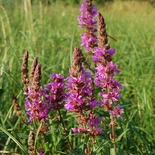
Purple Loosestrife(Lythrum salicaria)
Arriving in the U.S. from Europe during the 1800s, likely by cargo ships, this plant has spread quickly across the country and is now found in the Northeast and southern Canada, around Lake Erie down to the Ohio River and now occurring in the central U.S. In 36 states, purple loosestrife is considered a noxious invasive since it clogs irrigation systems and chokes waterways, slowing the natural flow and increasing silt deposits, degrading water quality. No wildlife has been observed feeding on this plant or its seeds.
Many states have prohibited the sale of this plant and in states that haven’t, avoid planting purple loosestrife to avoid its spread. Removal of plants at existing sites is easy. Herbicide use is cautioned and left to the professionals due to this plant’s tendency to be near water.
Keep an eye out for beautiful yet invasive purple loosestrife – The Vindicator.com
The Swan Song of the Monocarps
Meet the group of plants that spend their whole lives growing and only bloom once before dying. Monocarpic (Greek for “one fruit”) plants have only one shot to bloom and produce enough successful seed to propagate their species and the results are usually stunning.
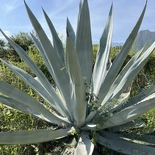
American Century Plant(Agave americana)

American Columbo(Frasera caroliniensis)
One of the monocarpic poster children is the century plant (Agave americana). While its lifespan is actually closer to 10-30 years, this desert plant found in Mexico and Texas grows approximately 6 feet tall before a giant flower stalk emerges that can be up to 30 feet tall. Another monocarpic species is the American columbo (Frasera caroliniensis) native to the eastern and central U.S., it occurs in 1 foot tall clumps before a 6-8 foot flower spike emerges. Bamboo is also a monocarpic species with some taking more than 100 years to flower but spread more readily via rhizomes instead of seed.
These plants wait their whole lives to bloom just once – San Gabriel Valley Tribune
North Carolina: An Alarming Loss of Wetlands
The subtropical coastal areas of North Carolina are some of the fast-growing counties in the nation. Unfortunately, that’s where many endangered plant species also live, including one of the few carnivorous plants in the world, the Venus flytrap (Dionaea muscipula). Due the expanding human population, plant habitat is being lost to new subdivisions, roads, and other development.

Venus Flytrap(Dionaea muscipula)
A conservation program has been in place for nearly 50 years and the state owns 26 sites and permits are required to access the sites. However, that doesn’t keep some landowners from trespassing and cutting down trees for better views or timber.
Beyond local population growth and trespassers, a larger threat looms with the recent Supreme Court decision to weaken wetland protection laws. “Because of a Supreme Court decision about isolated wetlands, we no longer see protection of isolated wet spots – those that don’t have water that is directly connected to rivers or creeks,” Julie Moore, chairwoman of the North Carolina Plant Conservation Board, said. “Many rare species in North Carolina are supported by habitats that are isolated wetlands. We are getting ready to lose even more habitats and species.” This includes the mountain bogs and isolated coastal wetlands that Venus flytraps and other rare species call home.
“It’s a weird habitat to start with,” Moore said. “It’s both wet and dry. When it’s dry you need what we call prescribed burning. The more people you have, the less they like smoke. These wetland law changes means more area is being drained so that you can put in more subdivisions.”
Population growth threatens native plant species, like Venus flytrap -The Mountaineer
Tennessee; Restoring Native Plants One Backyard at a Time
Neighbors for Native Plant Conservation, an East Nashville nonprofit, is working to restore and maintain native Tennessee plants and their ecosystems. Co-directors Bieke Punchochar and Bethany Patchin Crandell started the project in their own backyards to bring back pollinators. Their efforts have led to gardens full of native plants, insects, and other wildlife. With fall approaching, they are hoping to get the word out as gardeners prepare for next spring, and they are hoping they choose native plants.
Puncochar said “If we don’t have those plants, those bugs have to fly further to try to find places to put their eggs. If they have to fly further, sometimes they don’t have the fuel, so they would die. We have seen a decline in insects. This is a really important part of restoring the ecosystem.”
To attract interested gardeners newer to native plants and expand the potential ecological footprint her neighbors could have, Puncochar and Crandell worked with a nursery to create kits packed with native plants specifically from the Nashville area. These kits contain anise hyssop (Agastache foeniculum), blazing star (Liatris spp.), cardinal flower (Lobelia cardinalis), tall thimbleweed (Anemone virginiana), golden ragwort (Packera aurea), wild petunia (Ruellia humilis), and obedient plant (Physostegia virginiana) and should be planted in the fall.

Blue Giant Hyssop(Agastache foeniculum)
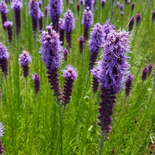
Blazing Star(Liatris spp.)
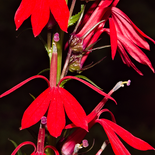
Cardinalflower(Lobelia cardinalis)
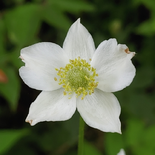
Tall Thimbleweed(Anemone virginiana)

Golden Ragwort(Packera aurea)

Fringeleaf Wild Petunia(Ruellia humilis)
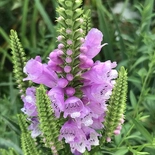
Obedient Plant(Physostegia virginiana)
Puncochar said “we give them information about why these particular plants are important. Also, which insects are supported by these plants, so every one of us can become kind of a little bit of a scientist at heart.
‘Restoring the ecosystem’: Nashville nonprofit brings back native plants and pollinators – WKRN.com

